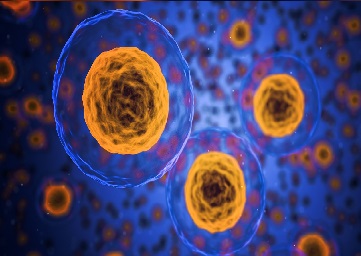
Plant and Animal Cell
Animal Cell | Plant Cell |
| No cell wall present | Cell wall made of cellulose |
| No central permanent vacuole present; many temporary vesicles present in the cytoplasm | A large central permanent vacuole present; no temporary vesicles present |
| No chloroplast present | Chloroplast present which is responsible for Photosynthesis |
Figure (i) Animal and Plant Cell, Credit: Wikipedia
Cell Organelles
An organelle is a sac-like structure present in the cell, having a specific function.
1. Cell Membrane
It is a partially permeable membrane, meaning that it allows only some molecules to pass through. It acts as a barrier between the cell and its surroundings. The semi-permeable membrane is made up of phospholipids and proteins. Some of those proteins present on the membrane work as enzymes and antigens.
2. Cell Wall
It is a fully permeable membrane, allowing everything to pass through it. In plants, it is made up of a polysaccharide, known as cellulose, which helps the cell remain upright. The cell wall is rigid, which makes it withstand high water pressure for the maintenance of cell shape and turgidity. The cell wall is absent in animals.
3. Cytoplasm
It is the medium that holds the organelles. It contains the enzymes and substrates required for metabolic reactions to take place.
4. Ribosomes
Ribosomes are the site of protein synthesis. Inside the cytoplasm, there are some extended membrane systems, known as Endoplasmic Reticulum. Ribosomes are either freely present in the cytoplasm or attached to the endoplasmic reticulum.
5. Vesicles
Vesicles are membrane-bounded structures that contain proteins/enzymes/hormones, and they transport them in and out of the cell.
6. Mitochondria
These double-membrane structures are the powerhouse of the cell. They have enzymes responsible for aerobic respiration (Glucose + Oxygen -> Carbon dioxide + Water + Energy). ATP is the molecule that stores energy.
Levels of Organisation
Figure (ii) Levels of Organization, Credit: Encyclopaedia Britannica
• The cell is the basic structural and functional unit of life.
• Tissues are all specialized cells that perform the same function.
• Many tissues together performing the same function form an Organ.
• Many organs together performing the same function is an Organ System.
